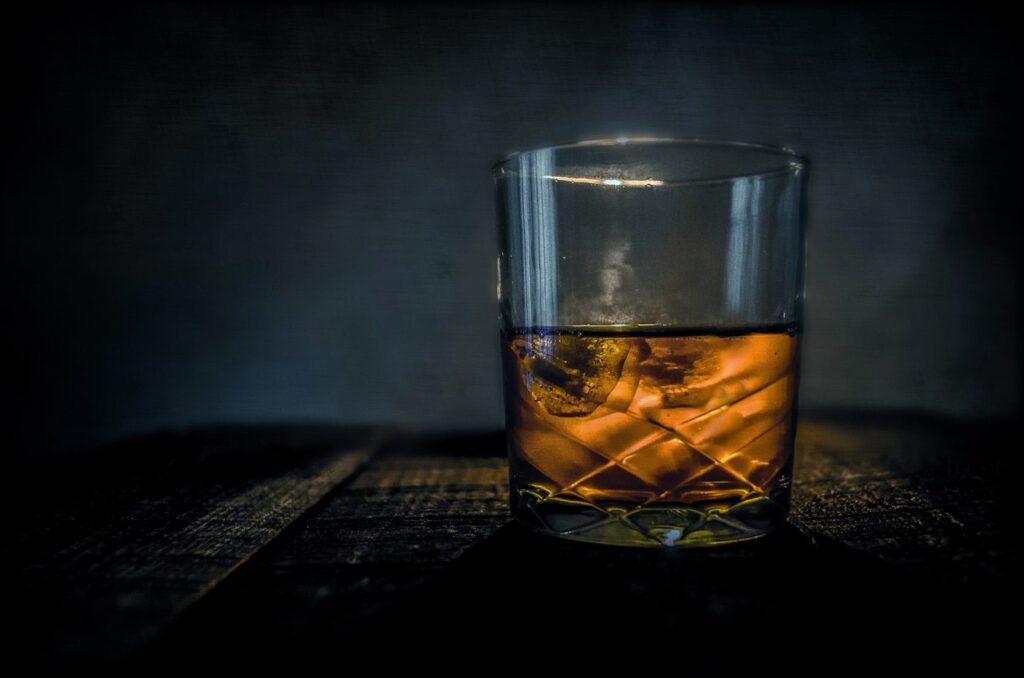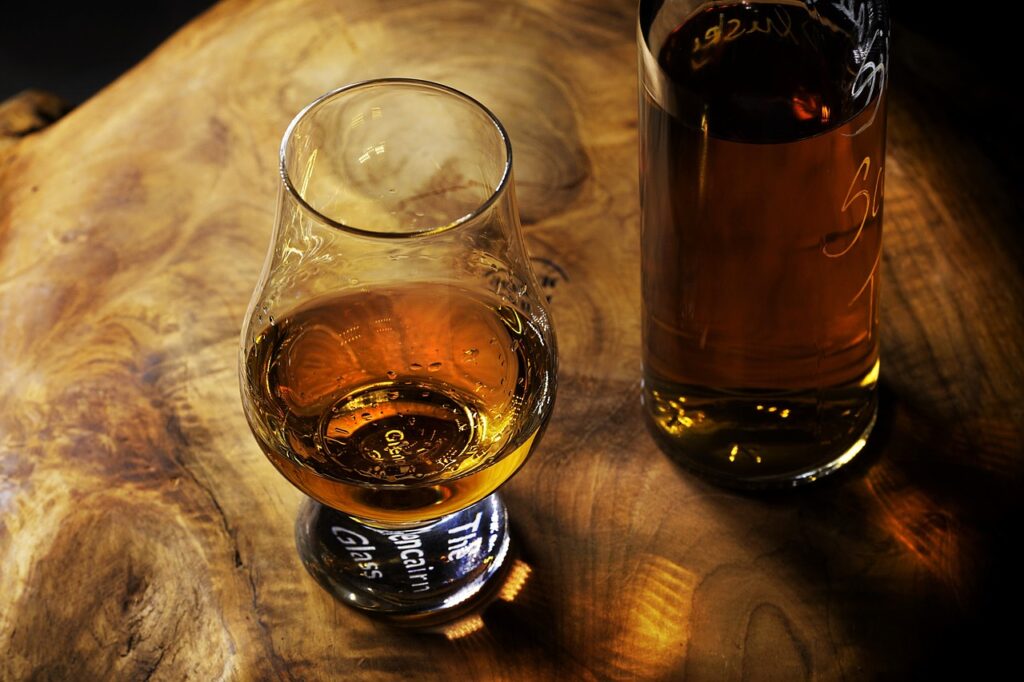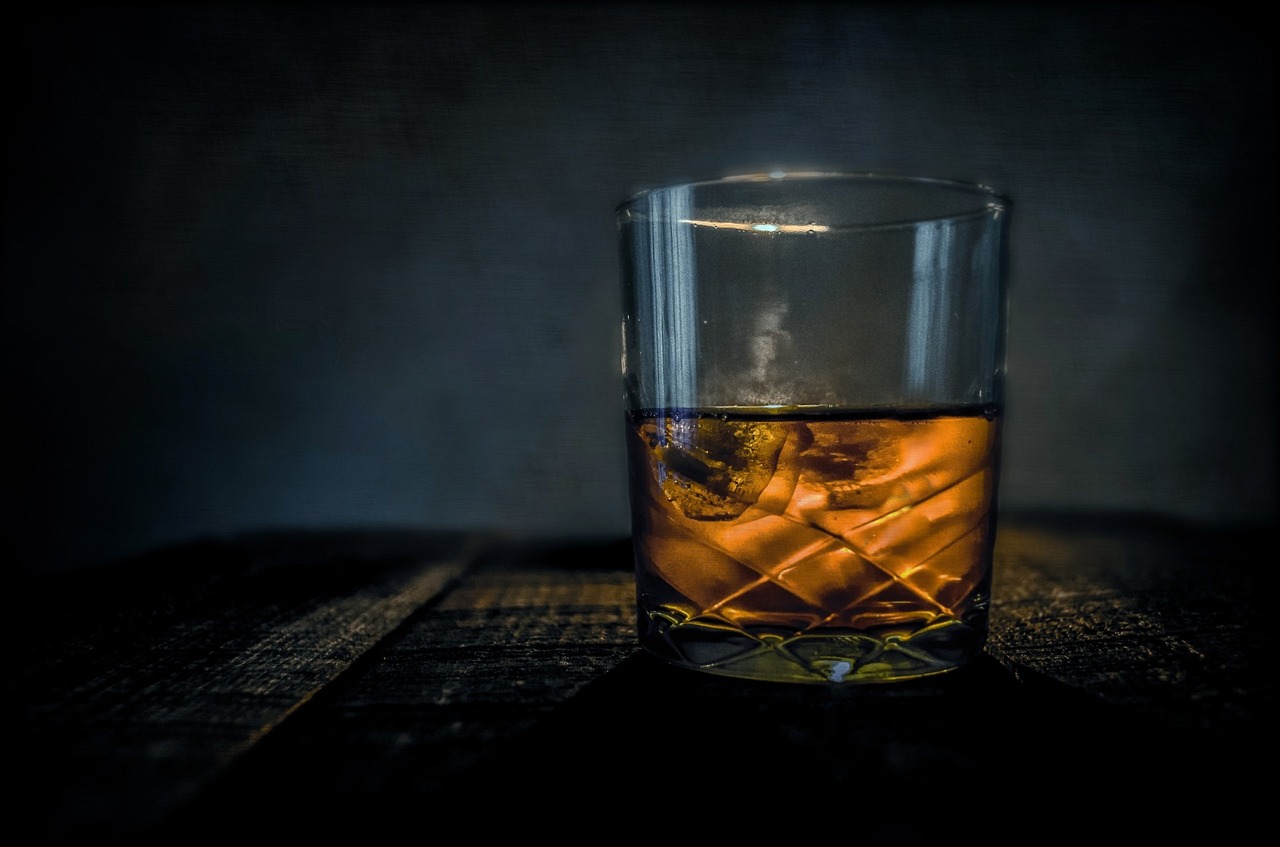Imagine the thrill of investing in a commodity that not only tantalizes your taste buds but also promises potentially lucrative returns. If you’re a savvy investor looking for a golden opportunity, look no further than the world of bourbon. From its rich history to its rising market demand, bourbon has become the liquid gold in a barrel that has captured the attention of investors worldwide. But what makes investing in bourbon so enticing? This article will explore the fascinating world of bourbon investment and unveil the undeniable allure behind this liquid treasure.

Introduction to Bourbon
Definition of bourbon
Bourbon is a type of American whiskey that has gained immense popularity and recognition around the world. By law, bourbon must be made in the United States and meet specific criteria to be classified as such. It is primarily made from a fermented mash of corn, along with other grains such as barley, rye, or wheat. The distinctive flavor profile of bourbon is contributed by the charred oak barrels in which it is aged.
History of bourbon
The origins of bourbon can be traced back to the late 18th century, with its roots deeply embedded in American history. The development of bourbon as a distinct style of whiskey emerged in the region known as Kentucky, due to its abundant corn and limestone-filtered water sources. The exact person or event that brought bourbon to life remains a topic of debate, but it is widely believed that early settlers in Kentucky began experimenting with distillation techniques to create a unique and flavorful whiskey.
Popularity and demand
In recent years, bourbon has experienced a significant surge in popularity and demand, both domestically and internationally. With its smooth and rich flavor, bourbon has attracted a diverse range of consumers, from whiskey enthusiasts to casual drinkers. The rise of cocktail culture and the revival of classic cocktails, such as the Old Fashioned and the Manhattan, have also played a part in increasing the demand for bourbon. Additionally, the craft spirits movement has led to the creation of small batch and artisanal bourbons, further fueling the interest in this beloved spirit.
Bourbon Production Process
Ingredients
The production of bourbon begins with carefully selected ingredients. The primary grain used in bourbon is corn, which must constitute at least 51% of the mash bill. The remaining grains, such as barley, rye, or wheat, add complexity and flavor to the final product. The quality and sourcing of these grains can greatly impact the taste and character of the bourbon.
Mash preparation
To create the mash, the grains are ground into a coarse flour and combined with hot water in a process known as mashing. This allows enzymes to convert the starches into fermentable sugars. The temperature and duration of mashing play a crucial role in extracting the desired flavors and sugars from the grains.
Fermentation
Once the mash is prepared, it is transferred to fermentation vessels, typically made of stainless steel or wooden fermenters. Yeast is added to convert the sugars into alcohol through the process of fermentation. During this stage, the flavors and aromas of the bourbon are further developed. Fermentation can take anywhere from a few days to a week.
Distillation
Distillation is the process of separating alcohol from the fermented liquid. Bourbon is typically distilled using a pot still or a column still. These methods allow for the extraction of alcohol at different strengths, resulting in a range of flavor profiles. The distillation process not only removes impurities but also contributes to the overall character of the bourbon.
Maturation
After distillation, the bourbon is placed in charred oak barrels for maturation. The aging process is essential in developing the unique flavors and complexities of bourbon. As the spirit interacts with the wood, it absorbs flavors from the charred interior and undergoes chemical changes, mellowing and acquiring desirable characteristics. By law, bourbon must be aged for a minimum of two years, although many premium bourbons are aged for much longer.
Bottling
Once the desired aging period is reached, the bourbon is ready to be bottled. Some bourbons are bottled at cask strength, meaning they are not diluted with water, while others may be diluted to a desired proof. The bourbon is often filtered before bottling to remove any sediments or impurities. Each bottle is labeled with information regarding the distillery, age, and proof, providing transparency for consumers.
Factors Driving the Rise in Bourbon Investments
Changing consumer preferences
As palates evolve and tastes shift, the demand for bourbon has witnessed a substantial increase. Consumers are becoming more discerning, seeking out unique and flavorful spirits that offer a memorable drinking experience. The growing interest in craft and small batch products has led to a surge in demand for limited edition and premium bourbons.
Craft distilleries and small batch bourbons
The rise of craft distilleries has introduced a new wave of bourbon production. These smaller-scale operations focus on quality and attention to detail, often producing small batches of bourbon with distinct characteristics. The craftsmanship and artistry associated with these distilleries have captured the attention of whiskey enthusiasts and collectors, leading to increased investments in these limited production bourbons.
Limited supply and increasing demand
The limited supply of well-aged bourbons has created a sense of scarcity and exclusivity, driving up demand and prices. The years required for proper maturation mean that there is a finite supply of aged bourbon available in the market. This scarcity has made certain bottles highly sought after, leading to investment opportunities for those who hold rare and collectible bourbons.
Expansion of export markets
Bourbon has gained international recognition and has become increasingly popular in markets beyond the United States. As global interest in American whiskey grows, the demand for bourbon continues to expand. This has opened up new opportunities for investors to tap into international markets and capitalize on the growing popularity of this iconic spirit.
Increased whiskey appreciation
The appreciation for whiskey, including bourbon, as a luxury and collectible asset has also contributed to the rise in investments. Collectors and enthusiasts recognize the historical significance, craftsmanship, and cultural value associated with aged bourbons. This nostalgia and reverence for whiskey have propelled it into the realm of investments, providing individuals with a chance to own a tangible piece of history.
Benefits of Investing in Bourbon
Potential for high returns
Investing in bourbon can offer the potential for substantial financial gains. As the demand for rare and limited edition bourbons continues to rise, the market value of these bottles often increases significantly over time. Savvy investors who acquire sought-after bottles early on can enjoy impressive returns on their investments.
Portfolio diversification
Bourbon can serve as a unique and valuable addition to an investment portfolio. Its relatively low correlation with traditional asset classes, such as stocks and bonds, allows investors to diversify their holdings and potentially reduce overall portfolio risk. Investing in bourbon can provide a hedge against inflation and market volatility, offering stability during uncertain times.
Tangible and collectible asset
Unlike many investment assets that exist solely on paper, bourbon is a tangible and collectible asset. Owning a physical bottle of bourbon allows investors to appreciate its aesthetic value and immerse themselves in the rich history and craftsmanship associated with the spirit. Furthermore, the collectible nature of bourbon makes it a potentially attractive asset for whiskey enthusiasts and collectors.
Potential for self-consumption
One unique aspect of investing in bourbon is the opportunity for self-consumption. Unlike other investments that are solely meant for financial gains, bourbon can be enjoyed and consumed by the investor. This dual-purpose aspect of bourbon investment adds an experiential element, allowing individuals to share a bottle with friends or toast to milestones while they still hold a valuable asset.
Global market demand
The global demand for bourbon is expanding, presenting investors with an opportunity to tap into diverse and growing markets. As emerging economies develop a taste for premium spirits, bourbon stands to benefit from increased global consumption. This broad market demand can potentially enhance the liquidity of bourbon investments and provide investment opportunities in international markets.

Types of Bourbon for Investment
Limited editions and rare releases
Limited edition and rare release bourbons are highly sought after by collectors and investors alike. These bottles often have a unique story or association, making them valuable from a collector’s standpoint. The limited supply and growing demand for these exclusive releases can drive up their market value significantly over time, presenting profitable investment opportunities.
Aged bourbon
Aging is a crucial factor in the production of bourbon, and well-aged expressions tend to command higher prices in the market. Aged bourbons that have been maturing for a considerable amount of time can offer investors the potential for substantial returns. The scarcity of well-aged bourbon and the demand for the rich flavors and complexities it develops make these bottles desirable for investment purposes.
Single barrel bourbons
Single barrel bourbons are crafted from a single cask, providing a unique and distinctive flavor profile. These expressions are often highly sought after by whiskey enthusiasts and collectors due to their limited availability and individual characteristics. Single barrel bourbons can have a higher market value, especially when they come from reputable distilleries or hold special significance.
Bourbon from reputable distilleries
Bourbons produced by well-established and reputable distilleries have a proven track record for quality and consistency. These distilleries often have a loyal following, with their products commanding a premium in the market. Investing in bourbons from these distilleries can offer a level of confidence and potential for long-term value appreciation.
Cask strength bourbons
Cask strength bourbons are bottled directly from the barrel without any dilution, offering the most intense and concentrated flavor experience. These high-proof bourbons are highly sought after by collectors and whiskey connoisseurs. The rarity and desirability associated with cask strength bourbons can make them valuable investments, particularly when sourced from limited production runs or esteemed distilleries.
Market Trends and Performance
Increasing auction prices
Auctions have become a popular platform for buying and selling rare and collectible bourbons. In recent years, auction prices for highly sought-after bottles have seen a significant surge. Rare and limited edition bourbon releases, particularly those from esteemed distilleries, have achieved record-breaking prices at auction houses globally. This upward trend in auction prices highlights the growing demand and value of these investment-grade bourbons.
Exponential growth in value
The value of certain bourbons has experienced exponential growth, with some bottles appreciating by several hundred percent over time. Limited edition releases, discontinued expressions, or bottles with unique characteristics have proven to be particularly lucrative investments. The combination of scarcity, desirability, and collector appeal has contributed to the remarkable rise in value for certain bourbons.
Historical performance
Historical data and analysis of the bourbon market suggest that investments in certain bottles and expressions have delivered impressive returns. Bottles from iconic distilleries or those with historical significance have shown consistent appreciation and stability over time. However, it is important to note that past performance is not a guarantee of future returns, and thorough research and analysis should be conducted before making any investment decisions.
Bourbon indices and tracking
With the increasing interest in bourbon investments, specialized indices and tracking platforms have emerged to provide insights into the market performance. These indices monitor the prices of specific bourbons or collections, allowing investors to gauge the overall market sentiment and track their investment performance. Bourbon indices provide valuable data for investment analysis and help investors make informed decisions.
Impact of influencers and celebrities
The endorsement and promotion of bourbons by influencers and celebrities have had a significant impact on market trends and performance. Recognizable figures who publicly express their love for bourbon can influence consumer preferences and increase the demand for certain expressions. The association with well-known individuals can add an extra layer of desirability to bourbons, making them attractive to collectors and investors.

Factors to Consider Before Investing
Market research and analysis
Investing in bourbon requires thorough market research and analysis. Understanding the trends, demand, and potential investment opportunities is essential. It is important to research the historical performance of specific bottles or expressions, as well as the reputation and track record of the distilleries producing them. Analyzing market data, auction results, and expert opinions can provide valuable insights and aid in making informed investment decisions.
Authenticity and provenance
Ensuring the authenticity and provenance of the bourbon bottles is of utmost importance. Counterfeit and fraudulent bottles can be prevalent in the market, especially with highly sought-after releases. Investors should exercise caution and thoroughly verify the source and integrity of the bottles before making any purchases. Consulting with experts or using reputable platforms and auction houses can help mitigate the risk of purchasing counterfeit bottles.
Condition and storage
The condition and storage of bourbon bottles can significantly impact their value and desirability. Proper storage, away from direct sunlight and at a consistent temperature, is crucial to preserving the integrity and quality of the whiskey. Additionally, ensuring that the bottles are sealed and unopened can contribute to their collectible value. When purchasing bourbon for investment, it is important to assess the condition and storage history of the bottles.
Financial commitment
Investing in bourbon requires a financial commitment. Prices for rare and collectible bourbons can range from a few hundred to several thousand dollars per bottle. Investors should establish a budget and determine the level of investment they are comfortable with. It is essential to take into account the potential holding period and liquidity of the investment, as well as the potential risks involved.
Expert advice and knowledge
Seeking advice from experts and professionals in the whiskey and investment industries is highly recommended. These individuals possess in-depth knowledge and experience in the bourbon market and can provide invaluable guidance when selecting and valuing bourbon for investment purposes. Their expertise can help investors navigate the complexities of the market and make informed decisions based on their specific investment goals.
Risks and Challenges in Bourbon Investments
Volatility and market fluctuations
Like any investment, bourbon carries inherent risks, including market volatility and fluctuations in value. The prices of certain bourbons can experience significant fluctuations over time, influenced by factors such as changing consumer preferences, market trends, or economic conditions. Investors should be prepared for these risks and have a long-term investment horizon to mitigate the potential impact of short-term market fluctuations.
Counterfeit and fraudulent bottles
The presence of counterfeit and fraudulent bottles in the bourbon market poses a significant risk to investors. Bottles that are falsely labeled or contain counterfeit liquid can lead to financial loss and damage to one’s reputation as a collector or investor. Conducting due diligence and verifying the authenticity of bottles through trusted channels is crucial to protect oneself from investment fraud.
Storage and aging risks
Bourbon, like other spirits, is subject to aging risks that can impact its quality and value. If not stored properly or exposed to extreme temperature fluctuations, bourbon can deteriorate, losing its desirable flavors and characteristics. Additionally, unforeseen events such as fire or natural disasters can damage or destroy a bourbon collection. Proper storage and insurance coverage are critical to safeguarding investments against potential risks.
Changing consumer preferences
Consumer preferences can shift over time, impacting the desirability and demand for certain bourbon expressions. While bourbon’s popularity has been on the rise, there is always a risk that tastes may change or new trends may emerge, affecting the value of specific bottles in the market. Investors should consider the long-term viability and appeal of the bourbons they choose to invest in.
Regulatory changes
Regulatory changes, such as alterations to production regulations or import/export laws, can impact the bourbon market and investment landscape. From tariffs on bourbon exports to changes in labeling requirements, these regulatory shifts can have far-reaching consequences for the industry. Investors should stay informed about potential regulatory changes that could affect their investment portfolio and adjust their strategies accordingly.
Key Players in the Bourbon Market
Well-established distilleries
Well-established distilleries, such as Jim Beam, Maker’s Mark, and Buffalo Trace, play a significant role in the bourbon market. These distilleries have a long-standing reputation for producing high-quality and consistent bourbons that have stood the test of time. Investing in bourbons produced by these esteemed distilleries can offer a level of confidence and potentially secure long-term value.
Craft and micro-distilleries
Craft and micro-distilleries have emerged as major players in the bourbon market. These smaller-scale operations focus on quality, innovation, and experimentation, often producing limited batch and specialty bourbons. The passion and creativity associated with craft distillers have attracted a dedicated following and have added diversity to the bourbon market. Investing in bourbons from craft distilleries can provide opportunities to support up-and-coming brands and access unique expressions.
Investment funds and portfolios
Specialized investment funds and portfolios focused on bourbon and whiskey have gained traction in recent years. These funds allow individuals to pool their investments and gain exposure to diversified collections of bourbon. Investing through a fund can provide access to rare and exclusive bottles that may otherwise be difficult to acquire individually. These investment vehicles often have professionals with expertise in the whiskey market, maximizing the potential for return on investment.
Collectors and enthusiasts
Whiskey collectors and enthusiasts, both individual and organized groups, are an integral part of the bourbon market. These passionate individuals actively seek out rare and limited edition bourbons, driving up demand and establishing market trends. Their knowledge, dedication, and networking capabilities contribute to the dynamic and ever-evolving nature of the bourbon market. Engaging with collectors and enthusiasts can provide valuable insights and connections for investors.
Whiskey auctions and platforms
Whiskey auctions and online platforms have become popular avenues for buying and selling bourbon. These platforms provide a transparent marketplace for collectors, investors, and enthusiasts to acquire rare and collectible bourbons. The competitive nature of auctions often leads to higher prices for sought-after bottles. Participating in these auctions or utilizing reputable online platforms can provide access to a wide range of investment-grade bourbons.
How to Start Investing in Bourbon
Research and education
Before embarking on the journey of bourbon investment, conducting thorough research and educating oneself about the market is essential. Understanding the history, production process, and market trends will provide a solid foundation for making informed investment decisions. Reading books, attending tastings or whiskey events, and engaging with industry experts can help acquire the necessary knowledge to navigate the bourbon market effectively.
Building relationships with experts
Developing relationships with experts and professionals in the bourbon industry can prove invaluable when starting to invest. These individuals can offer guidance, insights, and access to rare bottles or investment opportunities. Networking with distillers, master blenders, collectors, and industry insiders can provide a deeper understanding of the market and potentially open doors to exclusive bourbon investments.
Building a diverse bourbon portfolio
Creating a diverse bourbon portfolio is essential to mitigate risk and maximize potential returns. Investing in a variety of bourbons from different distilleries, ages, and flavor profiles can balance out potential market fluctuations. Diversification can also provide exposure to different segments of the market, such as limited editions, aged expressions, or single barrel releases. Building a diverse bourbon portfolio should be approached strategically and guided by thorough market research.
Considerations for buying and selling
When buying bourbon for investment purposes, it is crucial to consider factors such as rarity, condition, reputation, and market demand. Limited edition releases, well-aged expressions, and bottles from reputable distilleries often hold greater potential for investment appreciation. Conversely, when selling bourbon, understanding market trends and demand can help maximize returns. Timing the sale strategically, such as during auction seasons or during periods of increased market interest, can also impact the selling price.
Tracking market trends and valuations
Monitoring market trends, valuations, and the performance of specific bourbons is essential for successful bourbon investment. Utilizing specialized indices, tracking platforms, or engaging with experts can help keep investors informed about the latest market developments. Staying abreast of industry news, market analysis, and auction results will provide insights into pricing and potential investment opportunities. Regularly evaluating and adjusting the investment portfolio based on market conditions is crucial for maximizing returns.
Investing in bourbon is an exciting and potentially rewarding opportunity that combines the world of finance with the art of craftsmanship and the appreciation of a fine spirit. By conducting thorough research, seeking expert advice, and carefully selecting the right bourbons for investment, individuals can tap into the growing market demand and potentially build a valuable portfolio of liquid gold in a barrel.
